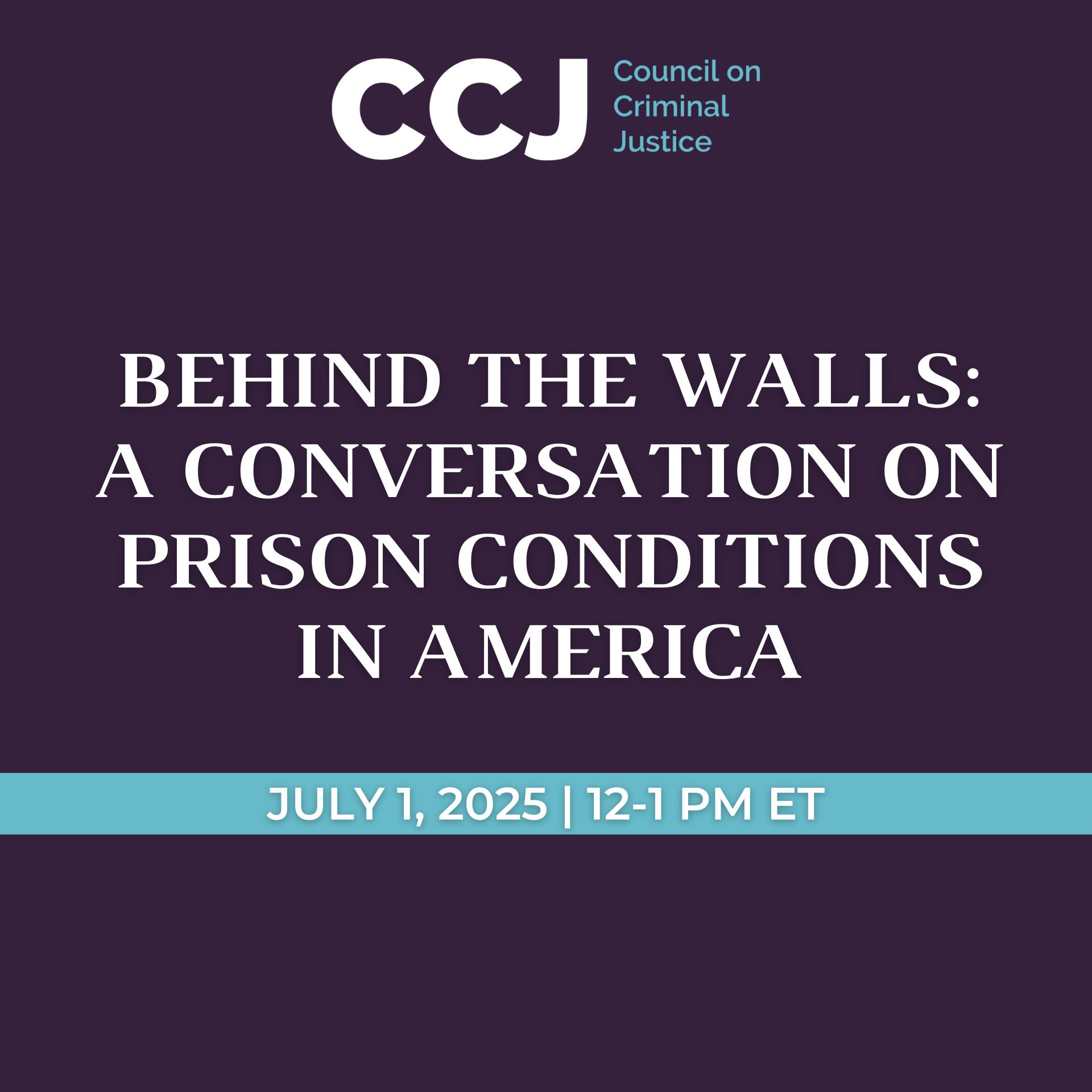Half of early decline in jail population has been erased; average jail detention has doubled during the pandemic
5:00 a.m. ET, December 7, 2020
Contact: Jenifer Warren
jwarren@counciloncj.org
916-217-0780
WASHINGTON, D.C. – COVID-19 deaths and infections in state and federal prisons continue to substantially outpace rates for the general population, driven by a surge of new outbreaks spreading through correctional facilities this fall, according to one of two new research reports on incarcerated populations released today by the National Commission on COVID-19 and Criminal Justice.
Drawing on data through mid-November, the prison study, by Kevin Schnepel of Simon Fraser University, found that COVID-19 case rates in prisons are 3.7 times the national rate, with 12 of every 100 people in prison infected with or recovering from COVID-19, compared with three in 100 U.S. residents. That disparity ratio is similar to the 4.1 figure reported in August.
The COVID-19 death rate in prison was 2.04 times that of the general population after adjusting for the age, sex, and race/ethnicity of incarcerated individuals—virtually unchanged from 2.1 times higher in August. That means 721 of the reported 1,412 COVID-19 deaths among incarcerated individuals as of Nov. 13 were in excess of what would be expected based on demographics, highlighting the vulnerabilities of people behind bars and the challenges of containing the virus in prisons.
The overall national figures mask wide differences among states. Five states – Arkansas, Delaware, Ohio, Oklahoma, and Oregon – report prison death rates more than seven times higher than rates for their general state population, while 14 states have prison death rates below those for the non-incarcerated.
A separate analysis on jails prepared for the Commission shows that jail populations declined by an average of 31% early in the pandemic but have since rebounded, erasing half of that drop. Drawing on nearly 19 million daily jail records collected between Jan. 1 and Oct. 22 from 325 facilities in 37 states, the report documented that people booked into jail have been detained for longer periods of time, with the average stay doubling from 15 to 30 days—nearly twice as long as the pre-pandemic average.
The characteristics of those booked into jails also have shifted, the study by Anna Harvey and Orion Taylor of New York University’s Public Safety Lab found. Compared to people entering jails before the pandemic, those booked between mid-March and late October were booked on more charges and were more likely to be booked for felonies. Another key finding shows that jail rebooking rates at 30, 60 and 90 days following release remain below pre-pandemic levels, suggesting that recent jail releases did not negatively affect public safety during the first six months of the COVID-19 outbreak.
Finally, the jails study found that while the proportion of Black people among those admitted to jails showed little change during the pandemic, their representation among those released during the same timeframe dropped by 5% compared to the pre-pandemic period. That dynamic helped drive an overall 4% increase in the proportion of Black people held in jails.
“The COVID-19 outbreaks in correctional facilities continue to represent some of the largest reported coronavirus clusters in the country,” said Commission Director Thomas Abt. “It’s critical that we safely reduce the density of incarcerated populations and take other proven measures to better protect the health of people behind bars and the staff who oversee them.”
The two reports are part of a series of research papers prepared for the Commission, which is led by former U.S. Attorneys General Alberto Gonzales and Loretta Lynch. The panel was launched in July by the Council on Criminal Justice (CCJ) to assess the impacts of COVID-19 on the criminal justice system, develop strategies to limit the current and future outbreaks, and recommend systemic policy changes to better balance public health and public safety. Its final recommendations will be released Dec. 14.
Other key findings in the prisons report include:
- Overall, 12.7% of people in prison have confirmed COVID-19 cases, compared with 3.4% of the general population. Three states, South Dakota, Arkansas and Kansas, report that more than 40% of their prison populations have been infected. But some states with high COVID-19 case rates, such as South Dakota, do not have similarly high death rates.
- Several of the states with the highest prison COVID-19 mortality rates exhibited sharp increases in deaths relative to statewide totals in October and early November. Overall, the total number of prison deaths in excess of national mortality rates continues to increase, indicating that COVID-19’s disproportionate impact behind bars is not abating.
About the Council on Criminal Justice
CCJ is a nonpartisan membership organization and think tank created to advance understanding of the criminal justice policy challenges facing the nation and build consensus for solutions based on facts, evidence, and fundamental principles of justice.
For more information on the Council and the Commission, visit https://counciloncj.org/



